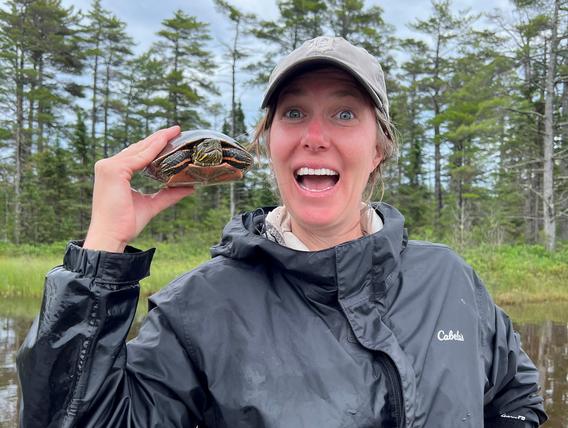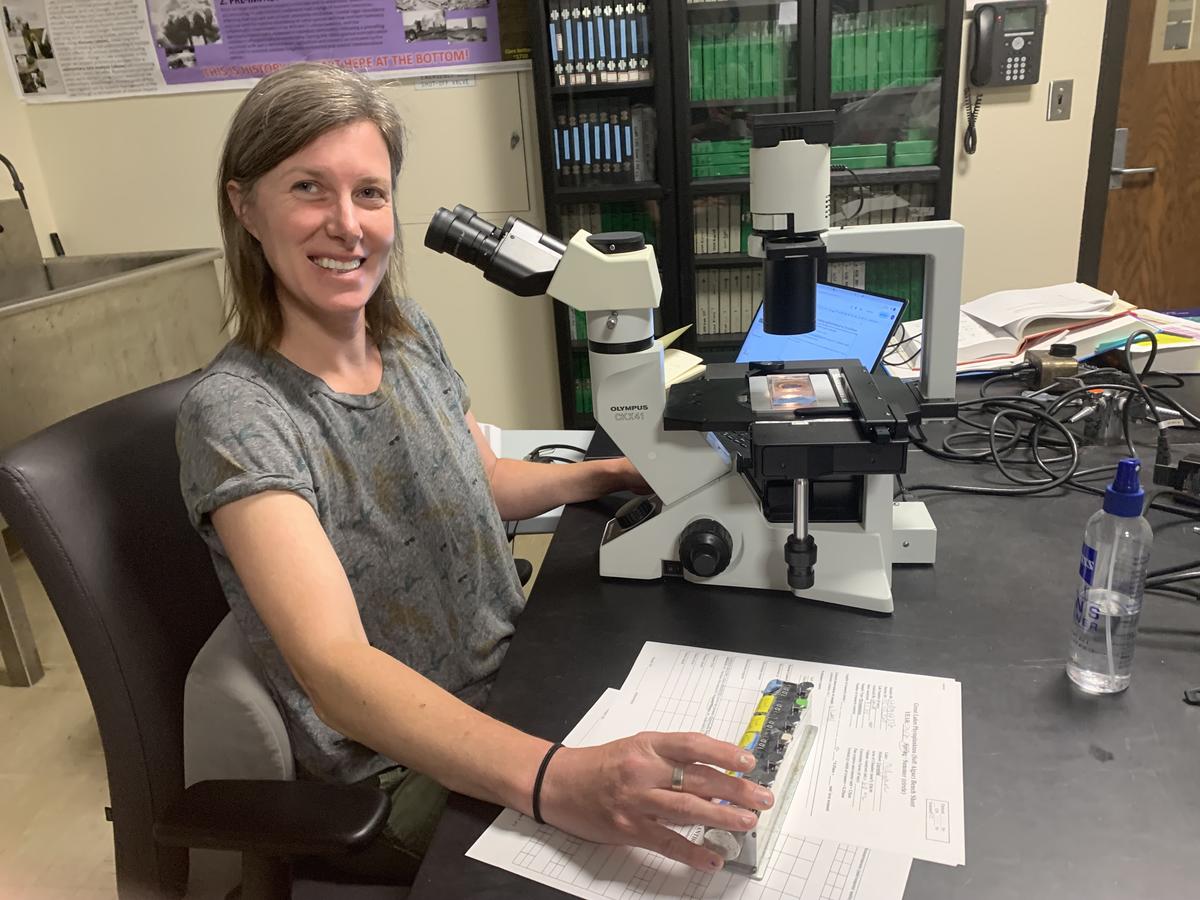“I don’t think you ever stop learning in the Water Group at NRRI,” said NRRI Aquatic Ecologist Holly Wellard Kelly. “We’re always learning new things or starting new projects or coming up with new methodologies.”
Before coming to NRRI, Wellard Kelly had stacked up impressive research experiences in equally impressive locations – hawksbill sea turtles in Hawaii, salmon in Idaho, stream habitat in Oregon and water quality in Perth, Australia – to name a few.
So it’s surprising that she was nervous about finding a position in Duluth when she and her husband moved here in January 2014 after her husband was offered an associate professor position at UMD. What aquatic research would be available to her in this frozen landscape, she wondered?
“I felt pretty lucky that NRRI needed help identifying invertebrates for a project where they collected samples in the St. Louis River Estuary prior to restoration,” she said. “I was offered a temporary position and I’ve been here ever since.”
Wellard Kelly didn’t know she wanted to be a water scientist when she started college at Michigan State University in 1999. So she peppered her college experience with classes and internships that got her hooked on aquatic ecology. She graduated with a bachelor's degree in Zoology in 2003 and went on to earn a master’s degree in Biology/Stream Ecology from Loyola University of Chicago in 2010.

“I really loved being able to work on projects that were helping to better understand our aquatic ecosystems so we can manage and conserve them for future generations,” she said.
Spice of Life
While the large and ongoing Great Lakes monitoring programs provide work stability, it’s the odd, small grants that provide the variety.
This fall, she’s helping to wrap up a project that examines how well different boat cleaning methods – hand removal vs. garden hose vs. vacuums vs. air blowers – work to remove aquatic invasive species.
“This project was a tough one to come up with the methods since we needed to design the tests to be realistic,” Wellard Kelly explained. “We had to think about how people would actually use the tools, and also to make comparisons among the different tool types.”
She’s looking forward to seeing the results of this project and getting the information out to anglers, invasive species managers and lake associations to prevent the spread of aquatic invasive species.
Collaborations
Water researchers don’t live in Waterworld. They rely on ornithologists to provide information about birds in wetlands, geomorphologists to understand how water flows across the landscape, and data specialists to help keep their information stored.
“I also collaborate with the Great Waters Research Collaborative group at the University of Wisconsin Superior that tests ballast water treatment systems to help prevent new introductions of invasive critters in the Great Lakes,” said Wellard Kelly.
Within NRRI, the front desk professionals help find a truck quickly when a crew is waiting, or track down an important package that is mis-delivered.
“Any time I need help or have general questions, they are there and ready to help,” she added.
She also frequently collaborates with NRRI’s engineers to design new research tools or understand new equipment.
Off Hours
With two kids, ages seven and three, non-working hours are busy. Wellard Kelly’s favorite activity is doing anything outdoors with the family.
“My youngest learned to ski this year. We all had a blast being able to get out on the slopes as a family,” she said. “We also love to hike and swim at Park Point or in the local rivers.”
Of course, during river visits, she just has to turn over rocks to find invertebrates to show her kids.
